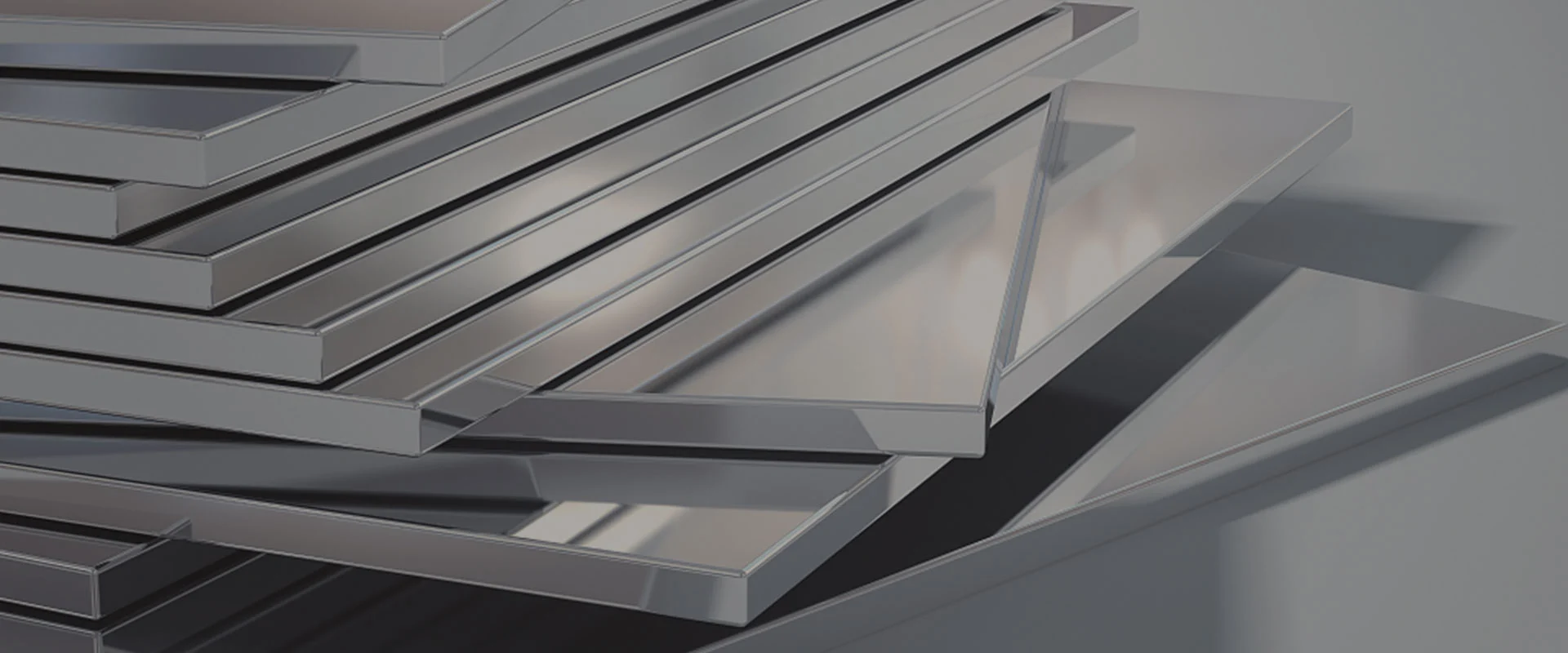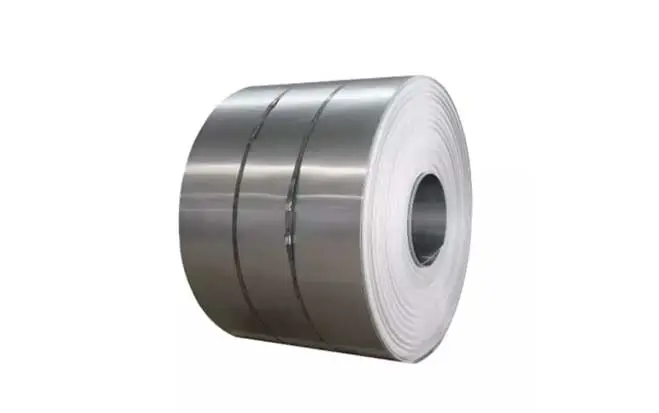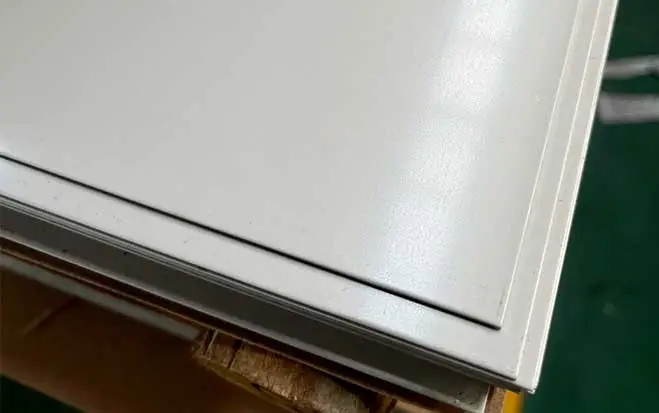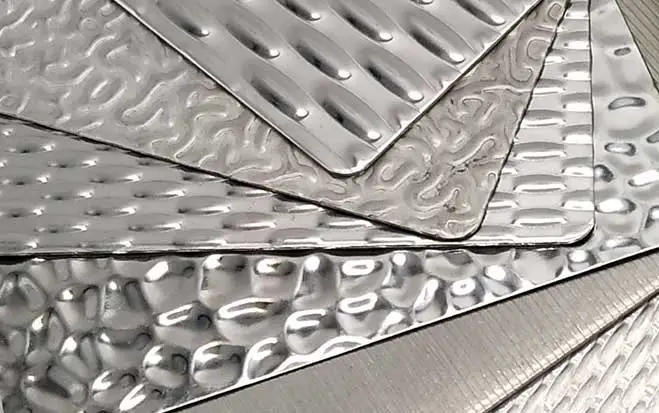
No. 1 finish stainless steel refers to the hot-rolled surface finish of stainless steel sheets or coils. No. 1 Finish Stainless Steel has a coarse and rough appearance, often used in industrial settings where aesthetics are not a primary concern.
No. 1 finish stainless steel refers to the hot-rolled surface finish of stainless steel sheets or coils. No. 1 Finish Stainless Steel has a coarse and rough appearance, often used in industrial settings where aesthetics are not a primary concern.
A No. 1 finish on stainless steel provides several advantages, including:
1. Corrosion resistance: No. 1 finish offers good corrosion resistance properties, which makes it suitable for use in harsh environments.
2. Easy to clean: The non-reflective, dull surface of No. 1 finish stainless steel does not show fingerprints, smudges, and stains easily, making it easier to clean and maintain.
3. Suitable for surface treatments: No. 1 finish provides a smooth and consistent surface that is suitable for painting, powder coating, and other surface treatments.
4. Strong and durable: No. 1 finish stainless steel is heat-treated and annealed, resulting in a strong and durable product that is resistant to deformation.
5. Versatile: No. 1 finish stainless steel is available in various grades and thicknesses, making it suitable for a wide range of applications in the construction, automotive, food processing, and other industries.
6. Non-reflective: The dull, non-reflective surface of No. 1 finish stainless steel makes it easy on the eyes, especially in bright environments where shiny surfaces can cause glare.
7. Cost-effective: No. 1 finish stainless steel is cost-effective compared to other finishes like polished or mirror-finish stainless steel.
Overall, the advantages of No. 1 finish stainless steel make it a popular option for industrial, architectural, and decorative applications where a combination of strength, durability, corrosion resistance, and easy maintenance are desired.
No. 1 finish stainless steel is a versatile material that is widely used in various industrial and architectural applications. Some of the most common applications of No.1 finish stainless steel include:
| Kitchen Equipment: | No. 1 finish stainless steel is commonly used in the manufacture of commercial kitchen equipment such as counters, sinks, cabinets, and tables. |
Chemical Processing Equipment: | No. 1 finish stainless steel's corrosion resistance properties make it suitable for use in chemical plants, as well as in the manufacture of industrial pumps, valves, and tanks. |
| Architectural Cladding: | No. 1 finish stainless steel is often used in facades, roofs, and other architectural cladding applications. Its non-reflective surface and durability make it attractive for contemporary designs. |
| Automotive: | No. 1 finish stainless steel is used in the manufacture of automotive components, including heat shields, exhaust systems, and decorative trim. |
| Medical and Pharmaceutical Equipment: | No. 1 finish stainless steel's hygienic and easy-to-clean properties make it suitable for medical and pharmaceutical equipment, including surgical and dental instruments and processing equipment. |
| Chemical Transportation: | No. 1 finish stainless steel's corrosion resistance properties make it suitable for the transportation of chemicals, such as acid tanks and chemical transportation containers. |
| Elevator Doors and Interiors: | No. 1 finish stainless steel is often used in elevator doors and interior panels due to its durability and easy-to-clean properties. |
| Industrial Equipment: | No. 1 finish stainless steel is used in a wide range of industrial applications, including conveyor systems, electrical enclosures, and machinery. |
No. 1 finish stainless steel is different from one of SS 2B Finish in surface appearance and texture. The key differences between the two finishes are:
1. Surface appearance: No. 1 finish stainless steel has a rough, non-reflective surface with a dull appearance, whereas 2B stainless steel has a smoother, reflective surface with a slight gloss.
2. Thickness: No. 1 finish is generally thicker than 2B finish stainless steel. This is because the hot rolling process used to create No.1 finish on stainless steel involves high temperatures that can cause some distortion and unevenness in the surface.
3. Processing: No. 1 finish stainless steel undergoes a hot-rolling, annealing, and descaling process, while a 2B finish involves cold-rolling, annealing, and descaling.
4. Applications: No. 1 finish is commonly used in the manufacturing of industrial equipment, kitchen equipment, and architectural cladding, while 2B finish is often used in decorative applications, such as trim, architectural accents, and appliance parts.
5. Surface roughness: The rough surface of No. 1 finish stainless steel can hide surface imperfections and scratches, making it suitable for heavy-duty applications that may experience wear and tear. In contrast, 2B finish has a smoother surface that is less prone to scratches and wear.
To maintain the appearance and integrity of No. 1 finish stainless steel, regular cleaning and maintenance are essential. Here are some cleaning requirements for No.1 finish stainless steel:
Use mild detergents: Use a mild detergent or soap and warm water to clean the surface of No. 1 finish stainless steel. Avoid using harsh chemicals or abrasive cleaners as they could damage the surface.
Use non-abrasive sponges or cloths: Use a microfiber cloth or a soft sponge to clean the surface of No. 1 finish stainless steel. Avoid using abrasive materials such as steel wool or scrub brushes, which could scratch the surface.
Rinse thoroughly: After cleaning, rinse the surface with clean water and dry it with a soft cloth.
Avoid water spotting: No. 1 finish stainless steel is prone to water spotting, which can leave unsightly marks. To prevent water spotting, wipe the surface dry immediately after cleaning, and use a soft cloth to buff it to a shine.
Apply protective coatings: No. 1 finish stainless steel can be coated with protective finishes like wax or silicone to prevent corrosion and extend its lifespan.
Avoid chlorine and salt: Chlorine and salt can cause pitting and corrosion on No. 1 finish stainless steel. Avoid contact with chlorine bleach or saltwater as much as possible.
Follow industry guidelines: Different industries may have specific cleaning guidelines and requirements for No. 1 finish stainless steel. It is important to follow industry standards to ensure optimal cleaning and maintenance of the material.



